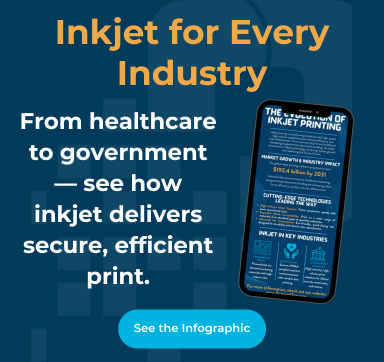In the ongoing effort to protect patient information from hackers, malware, and other external cybersecurity threats, hospitals and healthcare systems too often overlook the vulnerabilities inherent in their current printer hardware and printing practices. According to the HIPAA Journal, the reality is that most data breaches—over half—come from internal sources that include unsecured printers and printed patient documents.
These violations can expose your organization to significant HIPAA fines, but the loss of control of private data can also erode your patients’ trust and hurt your reputation in the communities you serve. While electronic health records are often touted as the answer to printing issues in healthcare, the reality is that printed paperwork and patient information remains a standard part of practice at healthcare organizations—even those that have adopted EHR. According to a 2017 data brief from the Office of the National Coordinator for Health Information Technology, 66 percent of hospitals still send or receive summary of care records via mail or fax, even though 94 percent of practitioners use or have used an EHR.
Managed print services are a business solution that can address all of a healthcare organization’s modern-day needs, delivering a range of key important benefits that will support your organization and your patients. Here’s a look at five ways managed print can improve healthcare operations.
Time and Cost Savings
Print-related tasks can get slowed down by hardware breakdowns, poor software integrations, internal bugs, low ink supplies, and other common headaches known to anyone who has ever tried to use an office printer. The potential value of printers, copiers, and scanners is all too often compromised by the failings of the hardware itself. From healthcare administrative staff to physicians, when workers don’t have working equipment, they lose valuable time. When work orders, schedules, immunization lists, or other important documents can’t get into the hands of those who need them, patients can be affected, too, leaving staff vulnerable to malpractice cases or potentially delaying the recovery of patients.
Managed print services can save your organization from these problems. Cloud-based management solutions are able to monitor ink and paper levels to provide responsive replacement, while managed software services ensure that updates, patches, and other IT needs are promptly received.
Maximum Productivity
Reduced downtime means that print jobs are able to be completed faster, with fewer interruptions. This supports faster workflows throughout your organization.
A managed print services provider can combine print performance data with a company-wide print audit to determine how to best optimize your use of print hardware.
This can include installing new print hardware in a hospital, providing new custom print solutions that print in the formats most commonly used, and/or ensuring that printed documents and document management practices remain in full compliance with regulatory standards. Certain units of a hospital, for example, may require additional access to printing hardware in order to better manage the paperwork bottlenecks that can increase wait times and interfere with performance.
Meanwhile, managed print services give you access to cutting-edge hardware and software that optimize operations and streamline workflows, supporting healthcare operations and boosting overall output.
Expert Print Management
A key difference between managed print services and onboarding new print solutions on your own is the access you get to print experts tasked with optimizing your print experience. This includes ongoing strategic support and guidance to ensure you’re getting the best value possible from your managed print infrastructure.
In addition to this expert support, organizations can receive adequate training to educate employees on the full suite of capabilities offered by your managed print infrastructure. Most organizations only use a fraction of the capabilities of new print hardware, which limits both functionality and productivity. A good managed print service will use its own in-house experts to turn your staff into print experts, too.
An administrative assistant, for example, can receive key training on print devices that helps him/her troubleshoot issues independently before turning to IT for help. This helps minimize downtime for your print hardware while empowering healthcare staff to keep operations moving quickly and efficiently.
Security and Compliance
HIPAA regulations are a critical priority for any healthcare organization adopting new printer technology. Hospitals and clinics must ensure that all printers in their network are compliant with HIPAA, and must also require that employees understand how to use printers to avoid actions that can create a breach.
IT also needs to account for printers and other devices when assessing its own end-point security. According to The Ponemon Institute, over 50 percent of companies overlook printers when it comes to this aspect of cybersecurity. Through a combination of quality printing solutions and managed services to oversee compliance, your organization can put its best foot forward when ensuring security and compliance on all end-point devices.
Conclusion
Unsecured printers are a serious concern for any organization, but for healthcare organizations, the consequences of a single breached printer can be devastating. With a managed print service, you can protect your patients and your reputation, while also opening the door to new, more efficient ways of doing business.
If you’re ready to see how a managed print service can transform your healthcare organization, get an assessment from a SumnerOne HIPAA expert today.
 FREE EBOOK DOWNLOAD
FREE EBOOK DOWNLOAD
















